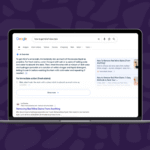If you don’t know what popups are, they are those little annoying boxes that pop up or out at you while you’re browsing a website. Often interrupting your shopping or surfing experience, they force you to stop what you are looking at and find that little tiny ‘X’ button to close them. They’re annoying and rude but they work. Really, really well.
Let us tell you why its good business strategy to implement these annoying little widgets and how to integrate this technology into your online store so it so it doesn’t drive traffic away and instead builds your customer database, in turn building your bottom line and customer engagement.
Use them – they work!
The main purpose of a popup is to provide a very strong call-to-action at the right time in a customer online experience to generate a positive reaction and a resulting action from them. This message might be an announcement of a sale or some other information you want the visitor to know about, but more often than not, it’s to collect their email address and details to you for you to use in the future.
Test after test has proven that popups work extremely well, better than side bar ads and other forms of online encouragement and marketing.
Why collect email addresses?
As mentioned above, the main purpose of popups, and where they are most successful and beneficial, is in the collection of email addresses. Each email address collected is worth serious dollars to a business ongoing. It represents a tangible and useable conversion of hard marketing work and provides your business permission to direct sell. Not something to be sneezed at!
By collecting email addresses of visitors, you get a second and maybe third chance to talk to them, bring them back to your site and convert them into a customer with targeted email campaigns. It’s the start of a new relationship.
Why is email better than a like, share or follow?
The simple truth is that email converts direct sales better than any other marketing channel. This is because your customer’s email inbox is their most personal online environment and getting permission to message them there provides you with a level of distraction-free attention for your sales pitch that you just can’t get on other channels.
Don’t get me wrong; having a solid and popular following on social media is very important too. In fact, you may have been focussing on building your following on these platforms and these do do wonders for driving traffic to your website and for creating sales. However, none of these social media channels are truly yours – except for the database of email addresses you collect.
Scary isn’t it, but its true. If you were to unintentionally break one of Facebook’s rules, accidentally delete your page, or if it just shut down and ceased to exist – all of this work, this entire audience, YOUR page, (which is not really owned by you), could disappear, along with all of your followers.
On top of this, many social media platforms are making it harder to reach your own followers without the use of paid posts. Facebook organic reach is declining continually to push businesses towards advertising, Instagram is following suit. It’s a sure bet that all the rest will do the same. It’s not fair and the reality of it is that just because you have fans and followers on your social networks doesn’t mean you can actually reach them. Annoying.
However, with an email list, you have the ability to put your message in your subscriber’s inbox any time you like and you own the list. No one can make it disappear. By having an email database and working hard to build it via popups you:
- Won’t have to fight social media algorithms to get your message seen
- Have the ability to download your email list at any time and move it to another service
- Have the ability to backup each new subscriber on your email list to something as simple as a excel spreadsheet so if anything does go wrong you still have the list
As you can see, having an email list is a powerful way to ensure you can connect to your community and potential clients on your own terms.
The downside of popups
With so much compelling evidence that popups work, why isn’t everyone using them? The fact is that there are disadvantages to using popups on your site that you should be aware of before you implement them across your online platforms, or that you should consider when determining how, where and when to place them.
Some of the main disadvantages are:
- Many visitors, especially those who are savvy with internet technologies, don’t like popups. Some people dislike them so much, they will immediately exit a site with a popup.
- Some popups, especially those that contain scripts, might slow your page load time down, reducing conversions and SEO.
- Anything less than the right message at the right time can be annoying and distract visitors from their experience.
Work out what type of popup is best for you?
There are lots of different types of and several different ways to display your popup based on visitor actions. Let’s take a look at some of the most popular below:
- Timed-Based – This method will show your popup after a predetermined amount of time. A time-based popup can work well if you set it to 60 seconds or greater, as you know at that point you are showing it to someone that’s been engaged with your site for a while, is more committed and less likely to find it annoying.
- Content-Based – Content-based popup will only show your popup on specified pages.
- Scroll-Based – A scroll-based popup will show your popup when a user has scrolled a specific percentage of the way down your page. This is commonly used on blog posts and is similar to the timed method as you are only showing your popup to someone who has engaged with your page.
- Exit-Intent – An exit-intent popup only shows when a visitor is about to leave your site. Using cursor tracking, the popup app will determine when someone is about to click the back or close button on their browser and show your popup in a final attempt to get an email address or offer a discount before the visitor leaves your site.
- Pop-Out – A pop-out is a slightly different version of a popup. Instead of popping up and blocking the visitors surfing experience, it pops out of the side of the browser but still allows the visitor to continue browsing.
It is important to consider which of the above options suit your website, customers and products and to design your popup with this in mind.
Make your popup work for you
If you’ve decided that a popup would be right for your store or website, there are a few things to consider to make it as effective as possible. Two things are essential to its effectiveness. These are timing of it appearing and the message it carries. If you nail both the dividends will be high!
When timing is everything – A popup can be shown at various points in a visitors experience. The trick is to get the timing right so they are not annoyed and responsive to it when it pops up!
Showing a popup as soon as a visitor hits your site might provide you with more emails but it comes at the expense of being intrusive and possibly annoying to some visitors. Some experts would argue that often the emails you receive from this approach are less qualified because these people didn’t have enough time to explore your site and truly determine if your brand and products are a good fit for their needs. This can lead to a poor email list with a lot of unsubscribes.
Waiting for 60 seconds before asking someone to give his or her details can be a good tactic. At this point they have had a quick look, hopefully like what they see and will quickly fill it out in order to keep moving forward.
It’s fair to say that you wont get it right the first time and its ok to experiment with when you time your popup and the message it contains. This also keeps it fresh, so first time rejecters might sign up on a different occasion. Monitoring the response you get will also help you refine when is the best time to pop up.
Choose the right message – Choosing the right message is just as important. Just like creating any ad, your image should be eye catching and interesting and your copy should be straight to the point and provide a clear benefit along with a strong call-to-action. It must interest the visitor and be what they are looking for. You only have a split second to get their attention and capture their interest so make sure you do.
Don’t ask for too much information straight up – a popup must be easy to fill out and quick. Just ask for the basics or the visitor will get impatient and abandon it. It’s your first interaction and you can build up the customer information as you develop a buying relationship with them. For now, just grab and email address and name. It’s a great start!
Make sure you test your popups on mobile – People are browsing more and more websites with mobile devices. Make sure that your popups display correctly on smartphone and tablet browsers. It needs to not only work but also be easy to close as well for those who are not ready to become a subscriber.
Make your customers feel safe and Include a privacy policy – People are wary of having their email address shared or sold to others when opting in to a new email list. Some people are even using special email addresses so that they know when their email address has been sold and who sold it. Don’t be the one to break the rules and tell them you wont break their trust.
Conclusion
So if your business is interested in improving its social media following, increasing newsletter subscriptions, or learning more about your customers, there is a popup solution available to fit your needs. With a wide range of tools, both free and paid available, your business can create the right popup for you at the right time and freshen it up when needed. When your business gets it right you will be on your way to a bigger database, more successful customer engagement and higher sales!
Blogs reference in the research of this blog
- https://www.shopify.com.au/blog/16009092-why-you-should-be-using-popups-on-your-online-store
- https://ambitionally.com/generate-more-leads/do-pop-ups-work/
- http://www.webpresencesolutions.net/website-pop-ups-5-reasons-to-use-them/
- https://blog.wishpond.com/post/91461412247/should-you-use-popups







